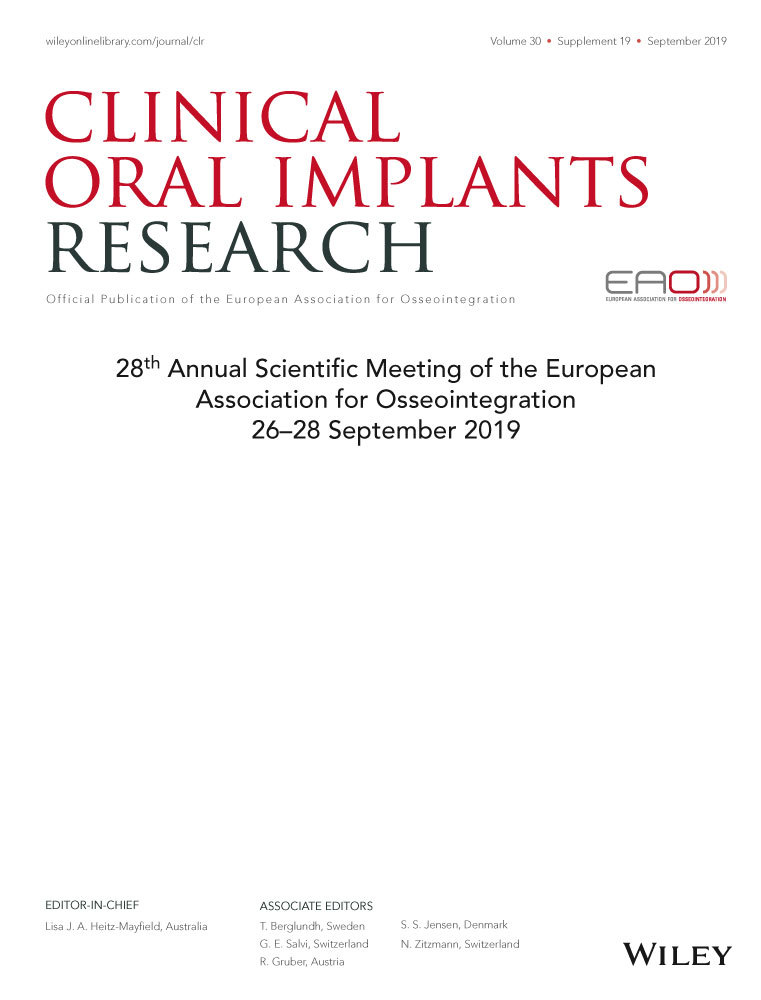The influence of growth factors on the dysmorphic disorders of mandible in hypodontia animal model
16344 POSTER DISPLAY BASIC RESEARCH
Background
Hypodontia causes significant developmental disorders of the bones of the jaws. In its course, the development of the affected part of the alveolar ridge is inhibited. In the case of oligodontia or anodontia, gnatic malocclusions and defects may develop, accompanied by disturbances of speech, swallowing and even breathing. Treatment of malformation of the jaws due to lack of tooth buds is long-term and does not often give satisfactory results. Orthodontic and surgical treatment are used.
Aim/Hypothesis
The aim of the study was to assess, on an animal model of a pig, the possibility of using selected growth factors used in a surgical clinic to limit the development of morphological disorders of the mandible occurring in the course of anodontia.
Material and Methods
The research was carried out on the basis of the consent of the ethics committee issued for the purposes of the grant of the National Science Center. The study was conducted on 10 pigs at the age of 7 days. In inhaled general anesthesia, unilateral germectomy of molar teeth in the mandible was performed. Four test groups were distinguished- A. germectomy without augmentation B. germectomy with β-TCP augmentation C. germectomy with PDGF augmentation on β-TCP carrier D. germectomy with rh-BMP-2 augmentation on a collagen carrier. The control group was left without surgery. After 3 months, the animals were sacrificed with pentobarbital 100 mg kg. Mandibles of test animals were collected and cleaned from soft tissues and then subjected to morphological tests. The morphological tests were performed using linear measurements made on natural samples as well as on CBCT scans of samples. Histological analyses of the alveolar ridge of all examination groups were carried out.
Results
Measurements made on the collected samples from the animals showed no statistically significant differences in the dimensions of the corpus and ramus of the mandible in all four test groups relative to the control group. The dimensions of the alveolar bone in all four test groups were statistically significantly different from the control group. In all cases, they showed a clear growth inhibition at the sites of extraction (P < 0.05). The use of augmentation of extraction sockets with β-TCP did not reduce the developmental disturbances of the alveolar ridge. The use of augmentation of post-extraction sockets in tested animals with PDGF on β-TCP carrier (C test group) and rh-BMP-2 on a collagen carrier (D test group) resulted in partial limitation of the dimensions of the alveolar ridge.
Conclusion and Clinical Implications
The presented research has shown-1. The usefulness of the animal model of a pig for research on anodontics observed in the human clinic. 2. No significant abnormalities in the corpus and ramus of mandible of pigs after losing the molar teeth in the seventh day after birth with simultaneous significant reduction in the key dimensions of the alveolar region of mandible. 3. The reduction of growth inhibition of the alveolar ridge after augmentation of post-extraction sockets with the BMP-2 or PDGF




